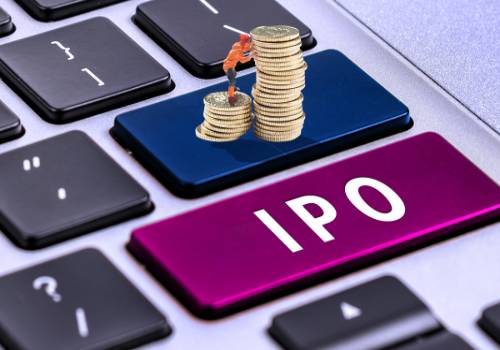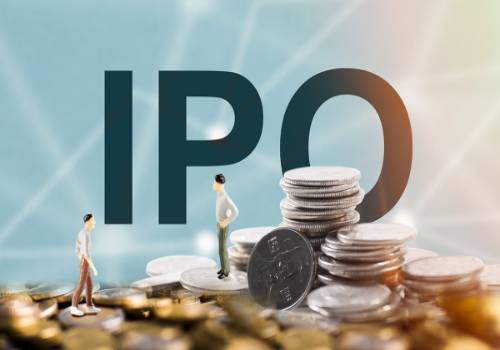《證券分析》第六版中的“安全邊際”|最新消息
2023-03-06 17:12:55 來源:雪球網 小 中
1、正文部分
 (資料圖片)
(資料圖片)
第七章:
Confidence in the ability of a bond issue to weather depression may be based on either of two different reasons. The investor may believe that the particular business will be immune from a drastic shrinkage in earning power, or else that the margin of safety is so large that it can undergo such a shrinkage without resultant danger.
As the degree of instability increases, it must be offset by a greater margin of safety to make sure that interest charges will be met; in other words, a smaller portion of total capital may be represented by bonds. If there is such a lack of inherent stability as to make survival of the enterprise doubtful under continued unfavorable conditions (a question arising frequently in the case of industrial companies of secondary size), then the bond issue cannot meet the requirements of fixed-value investment, even though the margin of safety—measured by past performance— may be exceedingly large.
Here the fault appears to be that the stability of the transportation industry was overrated, so that investors were satisfied with a margin of protection which proved insufficient.
Viewing past experience as a lesson for the future, we can see that selecting railroad bonds on a depression basis would mean requiring a larger margin of safety in normal times than was heretofore considered necessary.
From these cases we must conclude that even a high margin of safety in good times may prove ineffective against a succession of operating losses caused by prolonged adversity.
第十五章:
OUR DISCUSSION of the theory of preferred stocks led to the practical conclusion that an investment preferred issue must meet all the requirements of a good bond, with an extra margin of safety to offset its contractual disadvantages.
第二十七章:
Naturally he had to content himself with a smaller margin of safety than he would demand of a bond, a disadvantage that was offset by a larger income return (6% was standard on a good common stock compared with 41/2% on a high-grade bond), by the chance of an increased dividend if the business continued to prosper, and—generally of least importance in his eyes—by the possibility of a profit.
第三十九章:
第七部分標題、第五十和五十一章標題中的價格與價值差異(discrepancies)
2、塞斯·卡拉曼所寫前言(永遠的格-多投資智慧)部分
Value investing, today as in the era of Graham and Dodd, is the practice of purchasing securities or assets for less than they are worth—the proverbial dollar for 50 cents. Investing in bargain-priced securities provides a “margin of safety”—room for error, imprecision, bad luck, or the vicissitudes of the economy and stock market.
Investors could achieve a margin of safety by buying shares in businesses at a large discount to their underlying value, and they needed a margin of safety because of all the things that could—and often did—go wrong.
But the book provides the analytical tools to evaluate almost any company, to assess the value of its marketable securities, and to determine the existence of a margin of safety. Questions of solvency, liquidity, predictability, business strategy, and risk cut across businesses, nations, and time.
Graham and Dodd’s principles—such as the stability of cash flow, sufficiency of return, and analysis of downside risk—allow us to identify real estate investments with a margin of safety in any market environment.
3、詹姆斯·格蘭特所寫的導言(格雷厄姆和證券分析的歷史背景)
Since at least the early 1920s, Graham had preached the sermon of the “margin of safety.” As the future is a closed book, he urged in his writings, an investor, as a matter of self-defense against the unknown, should contrive to pay less than “intrinsic” value. Intrinsic value, as defined in Security Analysis, is “that value which is justified by the facts, e.g., the assets, earnings, dividends, definite prospects, as distinct, let us say, from market quotations established by artificial manipulation or distorted by psychological excesses.”
4、羅格·勞溫斯坦的第一部分導言
Precision is in any case unnecessary because the aim is to pay a good deal less than intrinsic value, so as to provide a margin of safety. Just as it would be tempting fate to cross a bridge while carrying the maximum allowable tonnage, buying a stock at full value would involve “a speculative component” (since one’s calculation of value could be off ).
The question, as always, is, does the business provide an adequate margin of safety at a given market price. For much of Amazon’s short life, the stock was wildly overpriced. But when the dot-com bubble burst, its securities collapsed. Buffett himself bought Amazon’s deeply discounted bonds after the crash, when there was much fearful talk that Amazon was headed for bankruptcy. The bonds subsequently rose to par, and Buffett made a killing.
It was enough to show, very simply from the earnings record, that the margin of value above the bondholders’ and preferred stockholders’ claims was too small to assure safety. Exactly the opposite was true for the Owens-Illinois Glass 5s. In this instance, also, it would undoubtedly have been difficult to arrive at a fair valuation of the business; but it was quite easy to decide that this value in any event was far in excess of the company’s debt.
5、霍華德·馬克斯第二部分導言
[In reviewing bond collapses among railroads between 1931 and 1933,] the fault appears to be that the stability of the transportation industry Howard S. Marks [129] was overrated, so that investors were satisfied with a margin of protection which proved insufficient.
Studying the 1931–1933 record, we note that price collapses [among industrial bonds] were not due primarily to unsound financial structures, as in the case of utility bonds, nor to a miscalculation by investors as to the margin of safety needed, as in the case of railroad bonds.
6、J. Ezra Merkin第三部分導言
Graham and Dodd’s margin of safety sends investors to scrutinize the balance sheet and projected earnings. They perform the analytical function that the authors endorse, apply the same skills, study the same documents. For them, the balance sheet is the main thing, far more than earnings, if for no other reason than necessity, as most bankrupt companies no longer have earnings. Graham and Dodd devote Part VI of the 1940 edition, nearly 70 pages, to balance sheet analysis. In the context of equity investing, the authors prize stocks that sell below their current asset, or liquidating, value.
7、布魯斯·格林威爾德第六部分導言
The purchase of securities should then be made only at prices far enough below the intrinsic value to provide a margin of safety that would offer appropriate protection against this “indistinctness” in the calculated intrinsic value. In essence, what Graham and Dodd required was that an investor, as opposed to a speculator, should know as far as possible the value of any security purchased and also the degree of uncertainty attached to that value. An investment would be made only at a price that provided a sufficient margin of safety to compensate for the uncertainty involved. As a prescription for obtaining “protection of principal and a satisfactory return,” this approach has obvious advantages over almost any conceivable alternative.
The third case is one in which the earnings power and asset value of a firm are approximately equal. This is the circumstance that should hold with reasonable management and no special protections from competition. If qualitative judgments support such conclusions, then the asset value provides a critical check on the validity of earnings projections. A thorough asset valuation then helps to provide a complete picture of what an investor is getting for a security and helps that investor settle with confidence on an appropriate margin of safety.
——————————————————————
上面的內容,基本涵蓋了安全邊際應該具備的含義、評估價值的方法和應該注意的事項,安全邊際的追求與可能成功和失敗等內容。
安全邊際是價值投資的核心理念,當買入價格低于價值的時候,就具備了安全邊際。由于價格是市場給的,所以追求安全邊際的關鍵就在對價值的評估,這涉及到了對企業的認知,足夠的會計知識和投資知識,當然,也需要一點點的運氣,因為價值來自企業的經營成果,而經營也是隨著時間變化而變化的。
巴菲特曾經說過,教授投資只需要開兩門課,一門是如何評估價值,另一門就是如何看待市場。前面講價值——你得到的,后面是價格——你付出的。做投資也好,經營生意也好,永遠離不開的就是價值和價格兩個要素及其間的差額,行情不好時,這個差額就是安全墊,行情好時,就是利潤,僅此而已。
其它書籍中也有很多對安全邊際的論述,如卡拉曼的書名就叫安全邊際。多爾西的書中也經常提到安全邊際的概念。巴菲特1984年寫的《格多村的超級投資者們》一文中到處都體現著價格與價值差異這一思想。《聰明的投資者》一書的第二十章也是寫安全邊際的。
本來想著將智者們對安全邊際的論述都列出來,但是太長了,臨時改成《證券分析》中涉及到安全邊際的相關討論。
作為普通人,我們很難創造出新的理論或理念用于投資,認清自己的真實面目,當對什么概念不清楚的時候,多查閱一些資料,看看智者們是怎么說的,這才是正途。做投資需要基本知識和基本邏輯,也需要多查閱資料,多學習知識。前者可以讓你不蠢,后者需要不懶。如此而已。
相關文章
- 周五市場全線跳水,盤面出現一個重要信號,股民做好出手準備!-世界速看料
- 【環球熱聞】十年投資路,最大敗筆伊利股份
- 基金投資者的“十八般武器庫”:晨星獎入圍硬核測評 世界百事通
- 全球觀天下!st重整個股炒作路線圖
- 寧德時代財報超預期,電池猛回頭“倒車接人”時刻到了嗎?
- 鈦白粉龍頭廠商訂單激增 相關概念股午后沖高 惠云鈦業直線拉升漲超15%:環球觀點
- 今日聚焦!ChatGPT板塊持續活躍 當虹科技漲超13%
- 寧德時代退股志存鋰業
- 觀天下!津膜科技:公司在研產品可用于海水提鋰濃縮分離環節
- 創意信息:公司目前業務不涉及ChatGPT|快消息
- 環球速看:普京暫停美俄核協議,“給我點面子,否則下一步是退出”
- 贛鋒鋰業董事長李良彬:“鋰鹽有60萬元一噸的昨天,也可能有10萬元一噸的明天” 環球滾動
- 參加私人銀行客戶路演的大鄉里經歷
- 每日快播:汽車價格戰背后的最大贏家
- 俄羅斯貿易結算格局大改:美元歐元加速退場 人民幣占比顯著抬升
- 蘇州一樓盤可“0首付”購房?置業顧問:通過申請裝修貸抵首付-即時
- 十四屆全國人大一次會議選舉產生第十四屆全國人大常委會副委員長、秘書長|視點
- 華安證券:數據安全建設將在近兩年進入放量周期
- 聚焦稀有金屬采礦、冶煉等領域優質個股,工銀稀有金屬ETF基金(159671)今日正式上市!
- 可轉債動態管理
- 汽車服務概念股開盤沖高 中國中期開盤漲停|天天視點
- 海水提鋰概念股繼續走強 津膜科技沖擊2連板:天天信息
- 李大霄:華爾街銀行賣股求生引發恐慌 中資銀行價廉物美是中流砥柱
- 消費電子板塊異動拉升 光弘科技大漲超15%
- 視點!最強AI再次進化 ChatGPT下周升級GPT-4:支持視頻了
- 【全球聚看點】分紅61億、營收破3000億,寧德時代的年報還有哪些看點?
- 離譜...吃個大瓜-當前速遞
- 環球今亮點!核心CPI環比跌幅創11年新高,3月以小盤價值抵御調整壓力——2023年2月物價點評
- 今日報丨甘肅首條“建養一體化”旅游公路通過竣工驗收
- 風口轉向(3月9日)
熱文推薦
排行推薦

寧德時代財報超預期,電池猛回頭“倒車接人”時刻到了嗎?

鈦白粉龍頭廠商訂單激增 相關概念股午后沖高 惠云鈦業直線拉升漲超15%:環球觀點

今日聚焦!ChatGPT板塊持續活躍 當虹科技漲超13%




